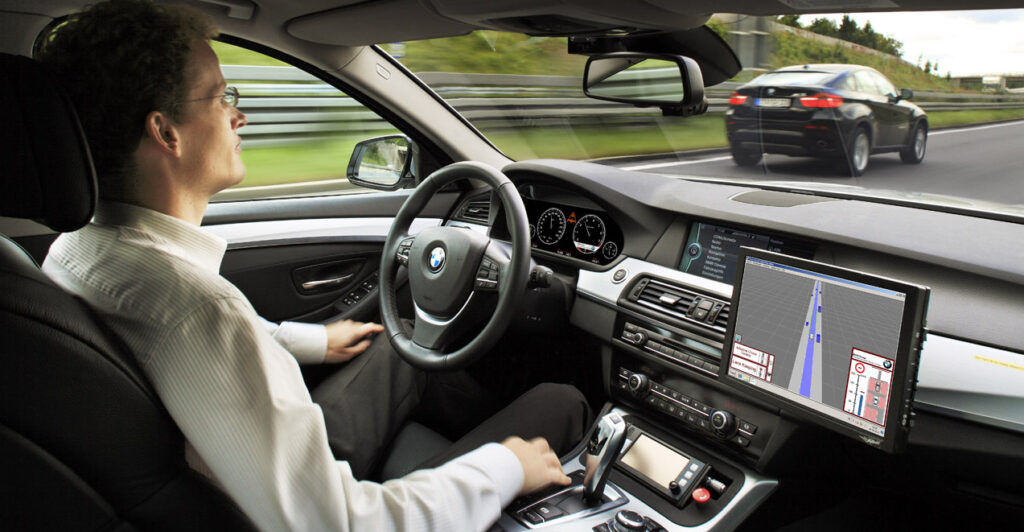Across the world
Driverless cars aren’t just being developed and tested in the UK. It’s a global phenomenon. Governments across the world – from the US, UK, Australia, Germany, and France, to Sweden and Japan – are backing the development of autonomous vehicles, their official name.
It’s not just established motor manufacturers like Ford, BMW, and Nissan who are developing driverless cars or their supporting components, hardware and software either. Newcomers without a history of manufacturing motor vehicles are getting in on the game too. Brands like Tesla, Uber, Nokia, Google, Apple, and NASA too.
The public and global media are showing increasing levels of interest with articles appearing all over the web and in our daily newspapers and magazines. Educational establishments across the world are taking notice and being directly involved with research too: Oxford University, Harvard University, The University of Queensland (Australia) and the Federal University of Espirito Santo (Brazil) for example.
In other words, the perfect storm is brewing: technology is aligning with regulatory permission, commercial intent, and consumer desire to bring about the development and adoption of driverless cars.
The state of play in the UK
- Chancellor George Osborne committed £20m in funding for driverless cars in the 2014 Budget because the government is supporting their development with a view to the UK becoming a leading force in autonomous vehicle technology.
- The Department for Transport has developed a code of practice for the testing of driverless cars on UK roads, in consultation with the government-backed UK Autodrive Consortium, which includes Ford, Jaguar, Tata and Innovate UK, as well as the Venturer and GATEway consortia.
- This code was an action point developed from the government’s pathway document regarding the regulations surrounding autonomous vehicles.
- There is no legal barrier to testing driverless cars on UK highways but any driverless car must contain a driver who monitors the car and can take control at any time. Domestic regulations are likely to be reviewed and amended to accommodate the driverless technology – currently being tested on the roads – in 2017 at the earliest, and it won’t be until the end of 2018 that international regulations are likely to be amended.
- Tests are being carried out in Bristol, Coventry, Milton Keynes and Greenwich (London). The tests began on 1 January 2015 and will last between 18 to 36 months.

Key takeaways
The one thing that stands out in the driverless landscape is the vast array of subjects it covers; it isn’t realistic for one party to become, or be considered, the expert in all areas.
To give you an idea of the scale, it touches upon all these subjects and more: manufacturing, law, regulation, ethics, insurance, public health, data capture, mapping, marketing, work culture, consumer behaviour, public infrastructure, global logistics, chaos theory and philosophy even!
Understanding and deciding what should happen in regard to any particular aspect of the development of driverless cars will continue to be a collective effort between the government, vehicle manufacturers, software and hardware suppliers, potential service providers e.g. Uber, the public and the insurance industry to name but a few.
Additionally:
- Driverless car technology will continue to develop at a quickening pace and bring with it new challenges and opportunities.
- Traditional motoring brands and newcomers e.g. Google will spearhead the development in an effort to establish a market lead.
- We should expect widespread disruption of commercial markets and our behavioural norms e.g. we might all end up hiring cars instead of owning them, we might see a drop in car sales and the need for personal car insurance, we will redefine liability, regulation and laws; people with traditional driving-related jobs might need retraining, and if we do see reductions in accidents and air pollution, what does that mean for the health service and donor register? Many of these changes and their impacts can be foreseen and planned for, many can not.
What about insurance?
 Any technology that could affect the insurance industry is naturally of interest to us, especially if the effect of driverless cars might mean changes to insurance law, specific policies, or the insurance and underwriting market in general.
Any technology that could affect the insurance industry is naturally of interest to us, especially if the effect of driverless cars might mean changes to insurance law, specific policies, or the insurance and underwriting market in general.
In terms of the tests being carried out this year, prevailing insurance law is being applied. This means there must be a driver in the car at all times who can take control as and when needed, and they must be fully insured as per normal. The companies and organisations involved may have put in place additional insurance but if they have, these don’t appear to be in the public domain.
The development of autonomous vehicles should be of interest to any insurance broker or underwriter, wherever they are in the world. The obvious consequence of their being no (human) driver, is trying to understand who or what will need to be insured, and who or what will be liable in the event of a collision?

